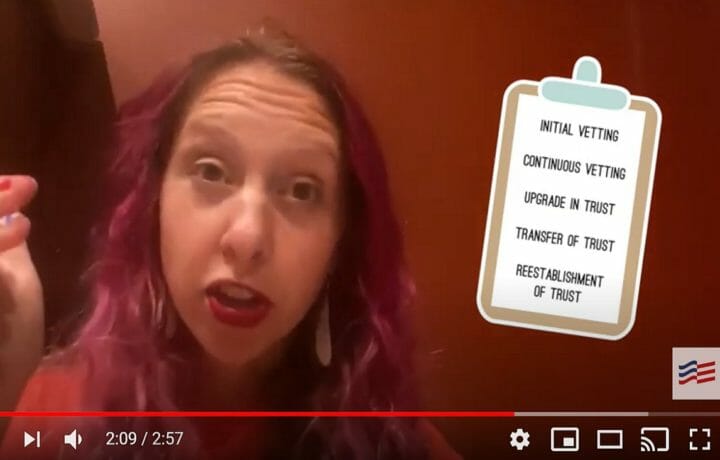Trusted Workforce 2.0 is the major overhaul of the security clearance process that has worked to end the record backlog in pending security clearance investigations, and is hoping to ushering in a transformed, more relevant security clearance application process.
In March of 2018 the Office of the Director of National Intelligence’s National Counterintelligence and Security Center announced the Trusted Workforce 2.0 initiative. It was an effort to overhaul and improve the security clearance process, and update the policy framework that’s been in place since the 1950s. The approach focuses on revamping and improving the security clearance policy framework, improving security clearance business processes, and modernizing the IT framework used in the personnel security process.
The efforts of Trusted Workforce 2.0 have gone so well, NCSC is already looking into what may come next. With the backlog completely busted and processing times near goal, NCSC Director William Evanina has speculated that despite the current pandemic, now may be he perfect time to continue process improvements and implement new plans and priorities.
“We’re looking at this as what else can we do while we have momentum going forward?” said Evanina, at a webinar hosted by the Intelligence and National Security Alliance this May. “Now might be the time to enhance 2.0 and say what would 2.5 and 3.0 look like?”
SECURITY CLEARANCE REFORM BY THE NUMBERS
Trusted Workforce 2.0 is anchored by a 1-3-5 principle.
One – The establishment of one personnel vetting model, which aligns guidelines and standards and provides characteristics of a trusted person. The underpinning of this personnel vetting model is changes to the federal investigative standards and adjudicative criteria.
Three – Is the reduction of the investigative tiers from 5 to 3. With the elimination of periodic reinvestigations, categories based on reinvestigation go away, and investigations are based solely on tiers of risk, not tiers of time.
Five – Is the creation of five specific vetting scenarios.
- Initial vetting: Moving ‘outsiders to insiders.’
- Continuous vetting: The ‘signature, transformative piece’ of Trusted Workforce 2.0. Continuous vetting allows for risks to be identified when they happen – not on a 5-or-10-year investigation timeline.
- Upgrade in trust: When an individual with a Secret clearance needs to move into a Top Secret clearance position, or an individual requires access to special access programs, conducting new vetting for the higher risk level.
- Transfer of trust: How quickly and efficiently to move from one agency to another. Typically referred to as reciprocity, which actually brings in a host of other criteria related to suitability.
- Reestablishment of trust: Vetting an individual who has left the ‘trusted workforce.’ Under the PR model, investigations would be considered ‘current’ if the individual attempted to ‘re-enter’ the system within two years. With PRs going away, reestablishment of trust won’t be based on an investigation date, but on what information is available in a continuous vetting system of record, and efficiently bringing those individuals back into the system.
“Trusted Workforce 2.0 is a repetitive process using a phased approach that’s been ongoing since 2018,” said Mark Frownfelter deputy assistant director National Counterintelligence and Security Center, Special Security Directorate.
The changes being made through Trusted Workforce 2.0 involve a variety of policy and legislative updates. The cooperation between the executive and legislative branch in implementing the changes and creating accountability toward reform efforts has been one of the bright spots. Executive Correspondence released in February paved the way for one of the more significant changes in the security clearance process – the implementation of a continuous vetting model over the traditional five-and-ten year periodic reinvestigation.
Trusted Workforce 2.0 is anticipated to be fully implemented in 2022, with more potential changes to the adjudicative criteria and federal investigative standards coming as early as this year.




